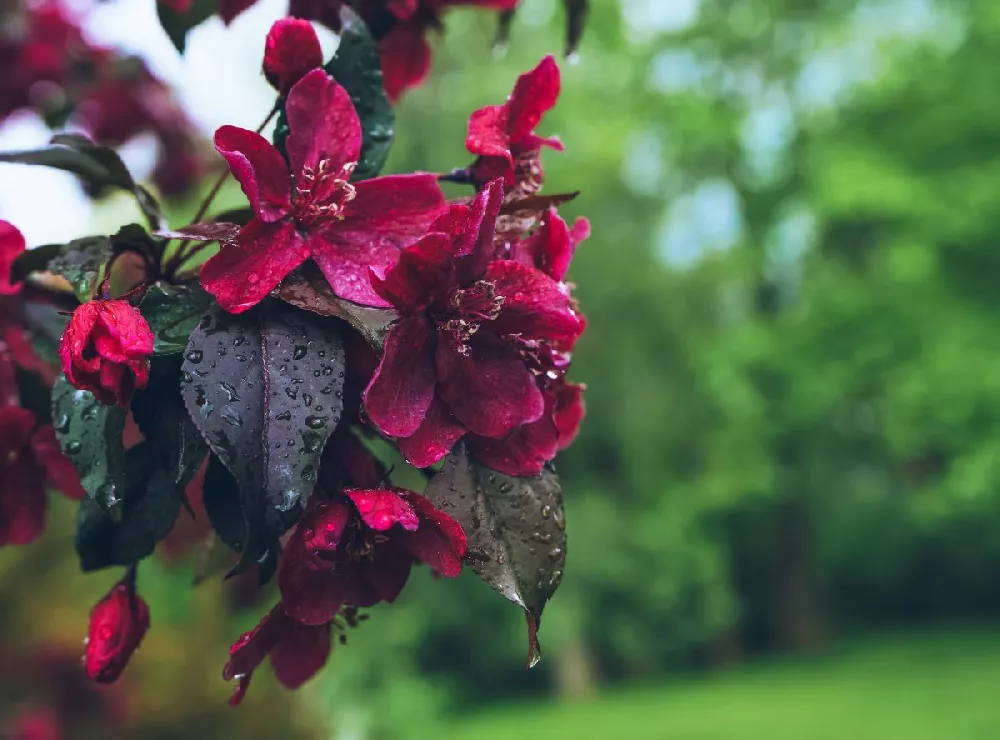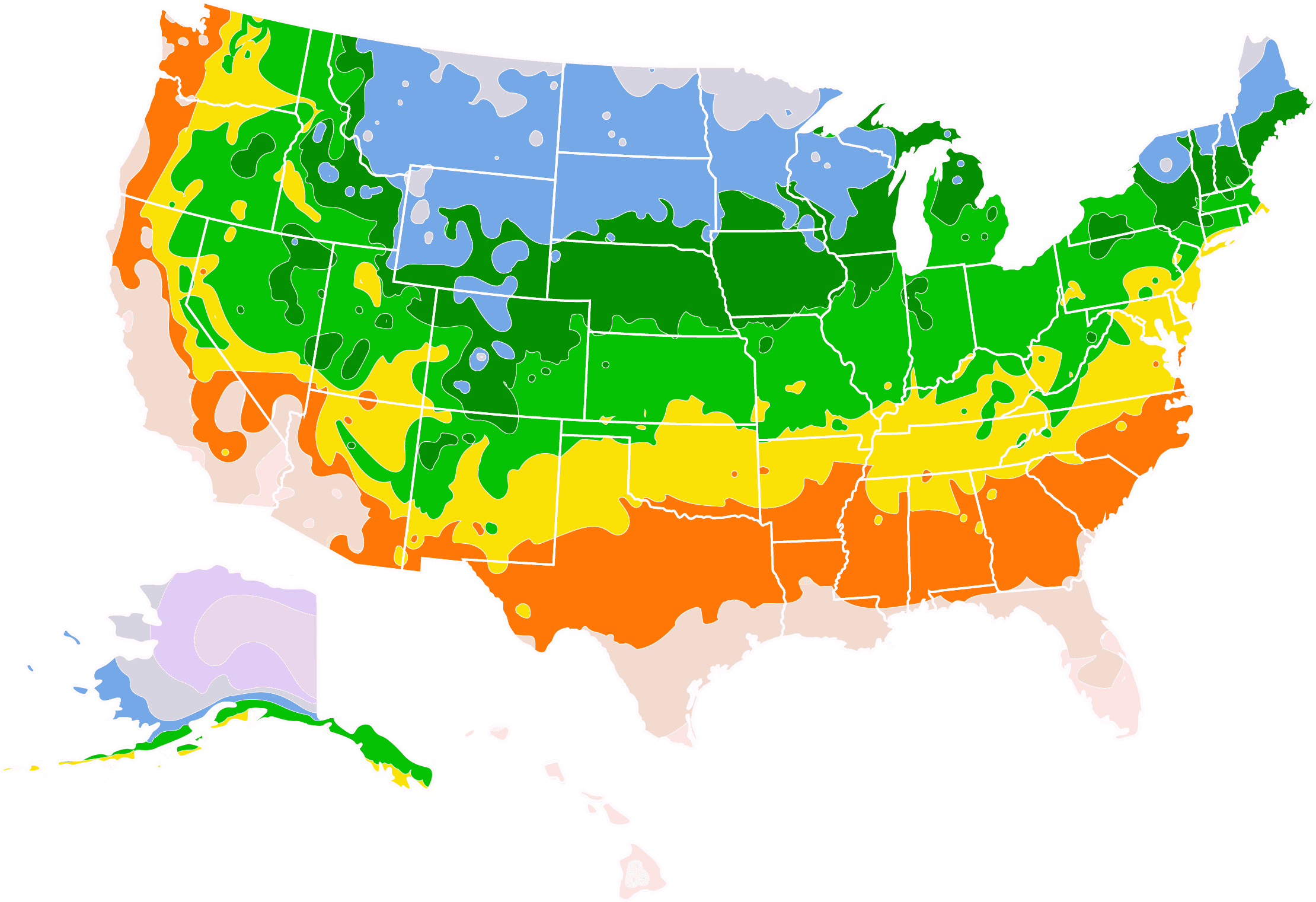- Home >
- Ornamental Trees >
- Royalty Crabapple Tree
Royalty Crabapple Tree for Sale - Buying & Growing Guide
If purple is the color of royalty, then the Royalty Crabapple, Malus x 'Royalty,' may just be the most accurately named cultivar ever. This lovely tree offers brilliant purple flowers that cover the tree in spring. These are followed by attractive leaves, which are also tinged purple and turn scarlet red in the fall. After the leaves drop, you'll notice the tree's purple-red berries, which persist through the winter, providing a true four seasons of interest as they stand out starkly against snowy backdrops. Those berries are a boon to winter birds and small mammals, and they are edible by humans as well. The tree is easy to care for and requires little fussing over. Here are a few more reasons why you need this tree in your garden:
- A perfect specimen tree for smaller gardens.
- Requires only minimal pruning.
- This cold-hardy tree can be grown throughout most of the continental U.S.
Enter your zip code to find nearby stores that may carry this plant.
Plant Care
Sunlight

Plant your Royalty Crabapple in full sunlight, six or more hours of direct sunlight each day.
Watering
Give your Royalty Crabapple about an inch of water a week or more in very hot or dry weather.
Fertilizing

Fertilize your Royalty Crabapple in early spring with a balanced, slow-release product such as a 5-5-5 formula.
Planting and Care
Planting instructions
Site your Royalty Crabapple in slightly acidic soil that drains well and receives at least six hours of direct sunlight a day. Unpot your sapling and tease out any encircling roots, which can girdle the tree and slowly kill it. Dig a hole that’s as deep as the root ball and twice as wide. Place the tree in the hole, spreading out the roots. Holding it upright and steady, fill in around the roots with topsoil that’s been amended with well-rotted compost or manure, tamping down as you go to eliminate air pockets. Water thoroughly. Apply a two to three-inch layer of organic mulch such as bark chips around the root zone to conserve moisture and hinder weed growth but keep it from touching the trunk to avoid problems with rot.
Watering and nutrients
Your Royalty Crabapple will thrive with an inch of water a week, either from rain or supplemental watering. If you live near the southern end of its range or are experiencing very hot or dry weather, you may need to increase watering, up to several times a week. Fertilize your tree in early spring with a balanced, slow-release fertilizer designed for landscape trees, such as a 5-5-5 formula.
Pollination
Crabapple trees are monoecious, or self-fertile, meaning you can harvest the fruit with only one tree. Your tree will have a heavier harvest, however, if you have two or more planted near each other. Bees, wasps and other small insects are the agents of pollination, transferring pollen from one flower to another.
Pruning
Prune your Royalty Crabapple in early spring before the buds break. Cut out any dead, diseased or damaged limbs, and thin out the canopy so that no branches are rubbing against each other and there is good airflow through the tree.
Pests and diseases
Pests that may appear on your tree include mites, aphids and borers. A healthy tree should be able to resist minor infestations, but if insect pressure is severe, consider releasing beneficial insects such as ladybugs and lacewings, which will attack the pests. Diseases of the crabapple include cedar-apple rust, and, more commonly, fire blight. This manifests as leaves and branches that appear to be burned. Cut them out when you see them with clippers that have been disinfected in household bleach or 70% alcohol.
Harvesting
Harvest your crabapples in the fall when the fruit has achieved a purplish-red color. A good way to tell if they are ripe is to cut one open. The seeds should be dark brown; lighter color seeds indicate the fruit is not quite ready for picking. You can also try biting into one. A ripe crabapple is crisp and firm but not difficult to bite.
Achieving maximum results
One option for your crabapple tree is to plant it in a container, which makes it a useful choice for decorating a patio or deck. Crabapples take well to container growing, and it’s not hard to care for them. A pot-grown crabapple won’t get as large as one grown in the ground, because its roots are constrained by the size of the pot, but it should be able to thrive. Choose a container that is roughly twice the size of the root ball with good drainage in the bottom. Use a good-quality potting mix, planting as per our directions above. Keep in mind that pot-grown plants may need additional watering and feeding to keep the soil refreshed.
FAQs
How big does the Royalty Crabapple get?
A mature Royalty Crabapple will reach a height of 10 to 15 feet, with a canopy of 10 to 15 feet. These trees have a moderate rate of growth, putting on about a foot of new growth every year until they reach their mature size.
Where can I grow the Royalty Crabapple?
This hardy tree can be grown anywhere that temperatures do not go below -20 degrees Fahrenheit, which is consistent with USDA hardiness zones four through eight. That means it can be grown as far north as coastal Maine and the Pacific Northwest. In the south, it will thrive in all but the most subtropical regions of Florida and Texas.
Is the Royalty Crabapple toxic?
No, the fruit is often eaten and used in cooking. The seeds, however, contain a toxic compound that can be bad for companion animals such as dogs, cats and horses. Avoid planting a crabapple tree in any pasture where you keep livestock and keep container-grown trees away from your pets.
Compare Similar Products
You can't add more Product Name - Product size to the cart.
OK








